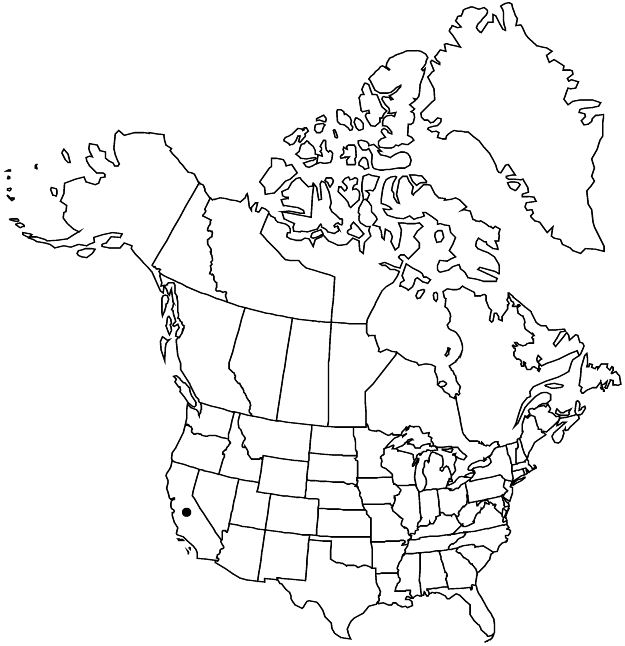Difference between revisions of "Ivesia sericoleuca"
in N. L. Britton et al., N. Amer. Fl. 22: 284. 1908.
FNA>Volume Importer |
FNA>Volume Importer |
||
| Line 38: | Line 38: | ||
|distribution=Calif. | |distribution=Calif. | ||
|discussion=<p>Of conservation concern.</p><!-- | |discussion=<p>Of conservation concern.</p><!-- | ||
| − | --><p>Ivesia sericoleuca is known from valleys and flats in the northern Sierra Nevada. Many historic collections were identified and distributed as I. unguiculata, and circumscriptions prior to 1962 include I. aperta (hence reports from Nevada).</p><!-- | + | --><p><i>Ivesia sericoleuca</i> is known from valleys and flats in the northern Sierra <i>Nevada</i>. Many historic collections were identified and distributed as <i>I. unguiculata</i>, and circumscriptions prior to 1962 include <i>I. aperta</i> (hence reports from <i>Nevada</i>).</p><!-- |
| − | --><p>Hairs are usually dense in plants of Ivesia sericoleuca, such that the leaves, and occasionally the stems and branches, are silvery gray, especially in Sierra Valley and the Feather River drainage. Plants in the Truckee River drainage tend to be less hairy with redder stems, less glomerate inflorescences, shallower hypanthia, and more conspicuous glandularity.</p><!-- | + | --><p>Hairs are usually dense in plants of <i>Ivesia sericoleuca</i>, such that the leaves, and occasionally the stems and branches, are silvery gray, especially in Sierra Valley and the Feather River drainage. Plants in the Truckee River drainage tend to be less hairy with redder stems, less glomerate inflorescences, shallower hypanthia, and more conspicuous glandularity.</p><!-- |
| − | --><p>As mentioned by J. T. Howell (1962), the chromosome count given for Ivesia sericoleuca by P. A. Munz (1959) most likely was based on a collection of I. aperta var. aperta. The chromosome count given here is instead based on Kruckeberg 3665, originally distributed as I. pickeringii.</p> | + | --><p>As mentioned by J. T. Howell (1962), the chromosome count given for <i>Ivesia sericoleuca</i> by P. A. Munz (1959) most likely was based on a collection of <i>I. aperta </i>var.<i> aperta</i>. The chromosome count given here is instead based on Kruckeberg 3665, originally distributed as <i>I. pickeringii</i>.</p> |
|tables= | |tables= | ||
|references= | |references= | ||
| Line 64: | Line 64: | ||
|publication year=1908 | |publication year=1908 | ||
|special status=Conservation concern;Endemic | |special status=Conservation concern;Endemic | ||
| − | |source xml=https://jpend@bitbucket.org/aafc-mbb/fna-data-curation.git/src/ | + | |source xml=https://jpend@bitbucket.org/aafc-mbb/fna-data-curation.git/src/8f726806613d60c220dc4493de13607dd3150896/coarse_grained_fna_xml/V9/V9_371.xml |
|subfamily=Rosaceae subfam. Rosoideae | |subfamily=Rosaceae subfam. Rosoideae | ||
|tribe=Rosaceae tribe Potentilleae | |tribe=Rosaceae tribe Potentilleae | ||
Revision as of 18:16, 18 September 2019
Plants silvery to grayish green; glands usually sparse, sometimes abundant. Stems decumbent to ascending, 1.5–4.5 dm. Basal leaves 10–20(–30) cm; sheathing base densely strigose abaxially; stipules absent; petiole 2–6(–10) cm, hairs abundant, usually spreading, 1–4 mm; leaflets 20–35 per side, loosely overlapping, 3–15 mm, lobes 0–4, oblanceolate to elliptic, hairs abundant, spreading to ascending, (0.5–)1–3(–4) mm. Cauline leaves 3–8(–10). Inflorescences 20–120-flowered, (2–)4–14 cm diam., flowers mostly arranged in several to many tight glomerules of 5–10 flowers. Pedicels 1–3(–12) mm. Flowers 10–15 mm diam.; epicalyx bractlets narrowly lanceolate to narrowly elliptic, (1.5–)2–2.5(–3) mm; hypanthium campanulate to shallowly turbinate, 1.5–3 × 2.5–4.5(–5) mm, often nearly as deep as wide; sepals sometimes purple-suffused, 3–5.5 mm, acute to acuminate; petals white, broadly spatulate to broadly obovate or obcordate, 4–7 mm; stamens 20, filaments filiform, 1.5–3 mm, anthers white to cream, 0.5–0.7 mm; carpels 2–7, styles 2.5–4 mm. Achenes brown, 2–3 mm. 2n = 28.
Phenology: Flowering summer.
Habitat: Dry gravelly meadows, margins of seeps, usually on vernally saturated volcanic soil, in sagebrush and grass communities, conifer woodlands
Elevation: 1300–2300 m
Discussion
Of conservation concern.
Ivesia sericoleuca is known from valleys and flats in the northern Sierra Nevada. Many historic collections were identified and distributed as I. unguiculata, and circumscriptions prior to 1962 include I. aperta (hence reports from Nevada).
Hairs are usually dense in plants of Ivesia sericoleuca, such that the leaves, and occasionally the stems and branches, are silvery gray, especially in Sierra Valley and the Feather River drainage. Plants in the Truckee River drainage tend to be less hairy with redder stems, less glomerate inflorescences, shallower hypanthia, and more conspicuous glandularity.
As mentioned by J. T. Howell (1962), the chromosome count given for Ivesia sericoleuca by P. A. Munz (1959) most likely was based on a collection of I. aperta var. aperta. The chromosome count given here is instead based on Kruckeberg 3665, originally distributed as I. pickeringii.
Selected References
None.
